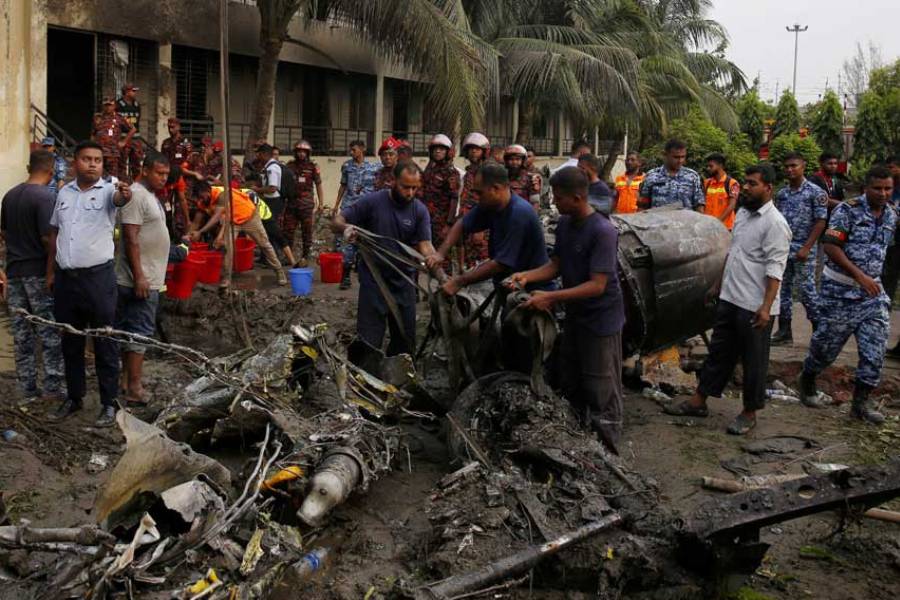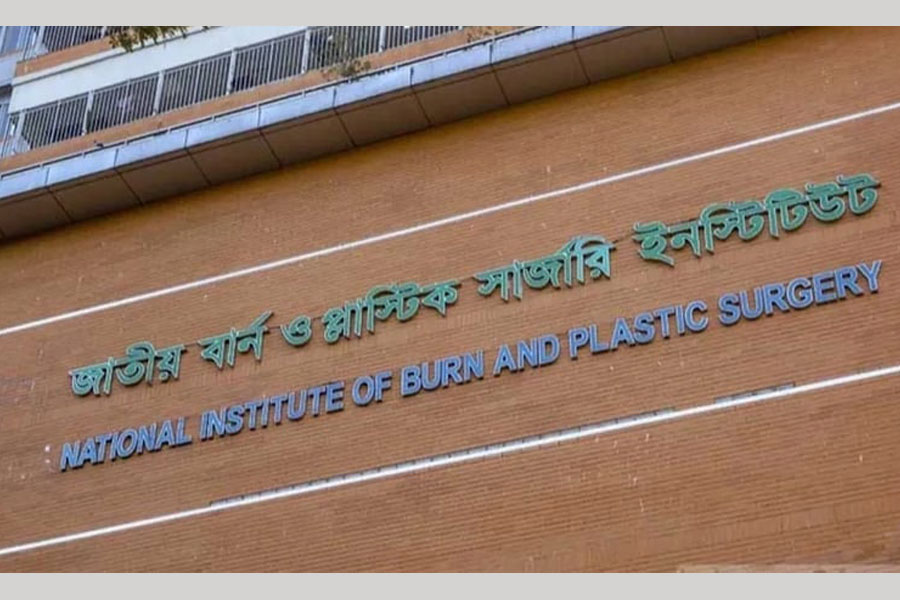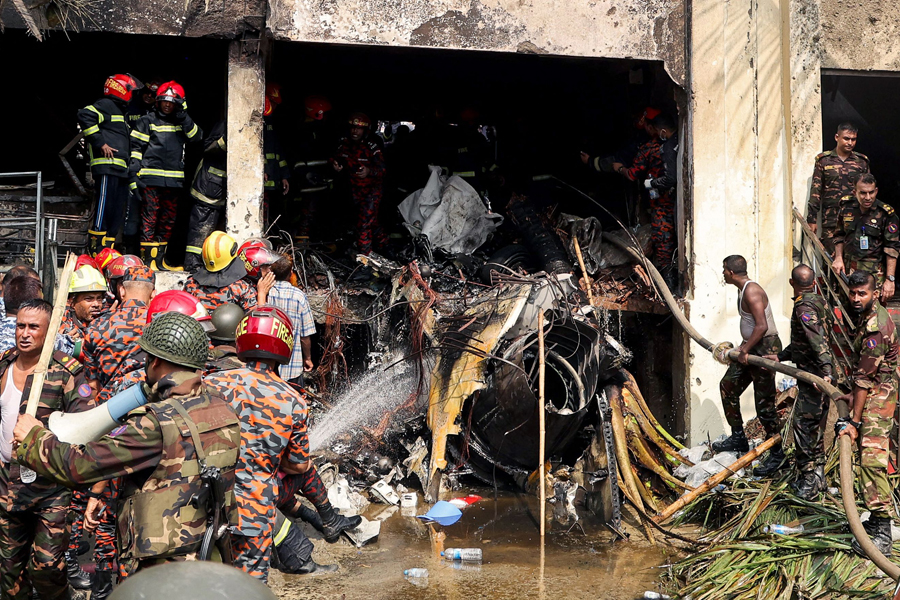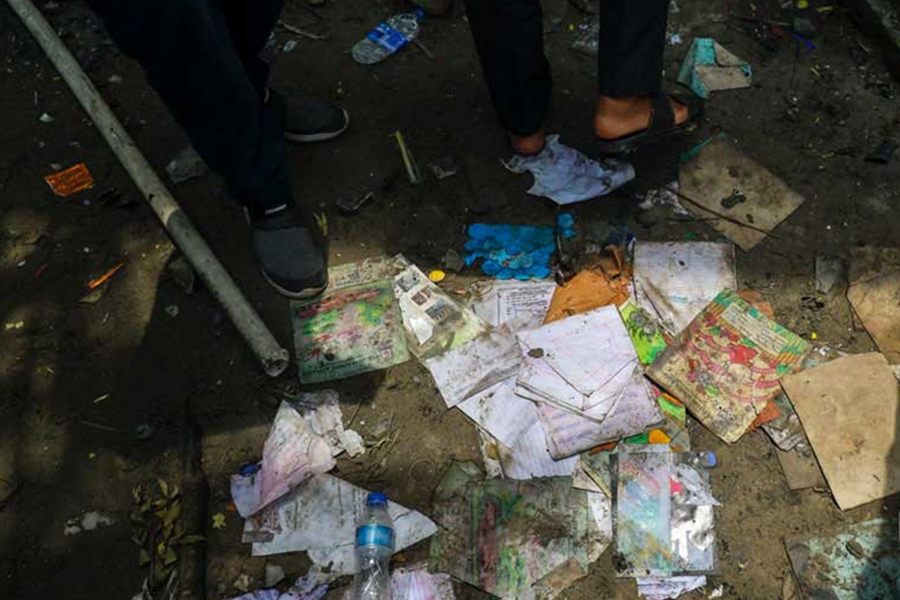- Copy to clipboard
- Thread starter
- #41
Saif
Senior Member
- Joined
- Jan 24, 2024
- Messages
- 15,397
- Reaction score
- 7,869
- Nation

- Residence

- Axis Group


Govt publishes identities of Dhaka aircraft crash victims
The government on Wednesday published the identities of the victims who were killed and injured in the BAF aircraft crash at Uttara in Dhaka. The bodies of the 21 victims among 29 deceased were handed over to their respective families, six bodies were kept at mortuaries and one remained unidentifi
Govt publishes identities of Dhaka aircraft crash victims
Published :
Jul 23, 2025 20:08
Updated :
Jul 23, 2025 20:08

The government on Wednesday published the identities of the victims who were killed and injured in the BAF aircraft crash at Uttara in Dhaka.
The bodies of the 21 victims among 29 deceased were handed over to their respective families, six bodies were kept at mortuaries and one remained unidentified, CA’s press wing shared the data of the Health Ministry in a Facebook post on Wednesday.
Besides, 57 injured victims are now undergoing treatment at different hospitals as 13 injured victims have been discharged from hospitals till 7:15 pm on Wednesday, it said.
Those included five teachers, 41 students, one school staff, one firefighter, one policeman, 14 army personnel, one assistant, one electrician and four others.
It also shared the hospital-wise list of casualties till 1:00 pm on Wednesday.
National Institute of Burn and Plastic Surgery: 44 injured, 11 dead
Kuwait Bangladesh Friendship Govt. Hospital: one injured, no deaths
Combined Military Hospital (CMH), Dhaka: 15 dead, 21 injured
Lubana General Hospital and Cardiac Centre, Uttara:, one dead, 13 injured
Uttara Adhunik Hospital: one injured, no deaths
Dhaka Medical College and Hospital: 3 injured, one dead
Shaheed Mansur Ali Medical College: One injured, no deaths
United Hospital: two injured, one dead
Human Aid Research Lab and Hospital: one injured
The death toll from the tragic military aircraft crash into Milestone School and College in Uttara has risen to 29, following the death of a nine-year-old boy, Nafis, who was undergoing treatment at the National Institute of Burn and Plastic Surgery, according to the Health Ministry.
The fatal crash occurred on Monday afternoon (July 21) shortly after an FT-7 BGI fighter jet of the Bangladesh Air Force took off from the Kurmitola airbase, triggering a massive blaze that claimed numerous lives, mostly children.
The Inter-Services Public Relations Directorate (ISPR) on Tuesday reported 31 deaths and 165 injuries, conflicting with the Ministry of Health’s figures and creating public confusion.
Six unidentified bodies remain at the morgue of the Combined Military Hospital (CMH), Dhaka. The Ministry of Health is now seeking assistance from relatives to identify these victims.
Published :
Jul 23, 2025 20:08
Updated :
Jul 23, 2025 20:08
The government on Wednesday published the identities of the victims who were killed and injured in the BAF aircraft crash at Uttara in Dhaka.
The bodies of the 21 victims among 29 deceased were handed over to their respective families, six bodies were kept at mortuaries and one remained unidentified, CA’s press wing shared the data of the Health Ministry in a Facebook post on Wednesday.
Besides, 57 injured victims are now undergoing treatment at different hospitals as 13 injured victims have been discharged from hospitals till 7:15 pm on Wednesday, it said.
Those included five teachers, 41 students, one school staff, one firefighter, one policeman, 14 army personnel, one assistant, one electrician and four others.
It also shared the hospital-wise list of casualties till 1:00 pm on Wednesday.
National Institute of Burn and Plastic Surgery: 44 injured, 11 dead
Kuwait Bangladesh Friendship Govt. Hospital: one injured, no deaths
Combined Military Hospital (CMH), Dhaka: 15 dead, 21 injured
Lubana General Hospital and Cardiac Centre, Uttara:, one dead, 13 injured
Uttara Adhunik Hospital: one injured, no deaths
Dhaka Medical College and Hospital: 3 injured, one dead
Shaheed Mansur Ali Medical College: One injured, no deaths
United Hospital: two injured, one dead
Human Aid Research Lab and Hospital: one injured
The death toll from the tragic military aircraft crash into Milestone School and College in Uttara has risen to 29, following the death of a nine-year-old boy, Nafis, who was undergoing treatment at the National Institute of Burn and Plastic Surgery, according to the Health Ministry.
The fatal crash occurred on Monday afternoon (July 21) shortly after an FT-7 BGI fighter jet of the Bangladesh Air Force took off from the Kurmitola airbase, triggering a massive blaze that claimed numerous lives, mostly children.
The Inter-Services Public Relations Directorate (ISPR) on Tuesday reported 31 deaths and 165 injuries, conflicting with the Ministry of Health’s figures and creating public confusion.
Six unidentified bodies remain at the morgue of the Combined Military Hospital (CMH), Dhaka. The Ministry of Health is now seeking assistance from relatives to identify these victims.





















